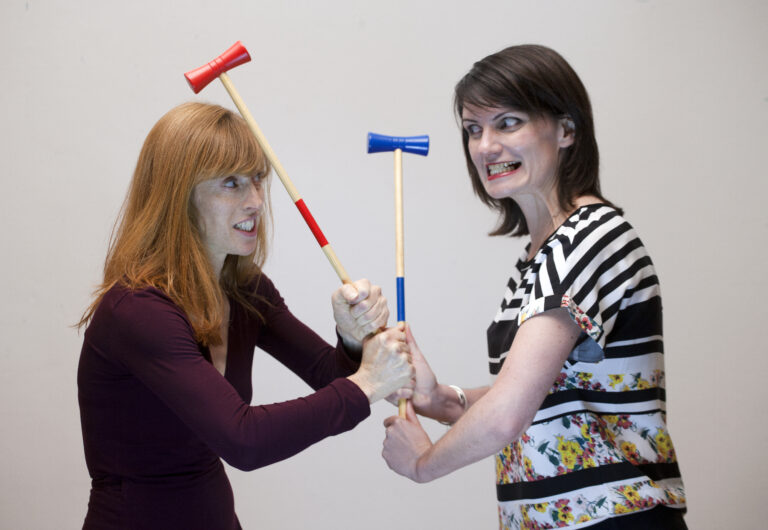
Confidence and Self Esteem
This is how it works: when you feel confident, you’ll try new things, and the more you try the better you’ll get.
How Do You Build Confidence and Self Esteem?
What a wimp!
That’s what it feels like.
You’re a wimp if you feel like you have no confidence or self-esteem.
Loser
People will walk all over you, take advantage or just ignore you.
You’ll be the last one picked for the volleyball team and certainly, you won’t be trusted to make the big presentation in front of your company’s major new client.
Then the cycle goes on.
Failure Humiliation Inaction
You try something and fail and get humiliated, so it makes it harder to try again.
Because you don’t try, even thinking about it feels impossible.
That, of course, gives you a whole lot more inventive an arsenal with which to beat yourself up.
Boy, you really are a wimp!
As the cartoon on the front cover says, ‘It’s easy’.
Just entirely change who you are.
Because that’s also what it feels like when you have no confidence and self esteem. That you’d have to change everything about yourself in order to feel like tackling the world’s challenges.
Doesn’t all that sound just awful?
It can feel genuinely awful to lose confidence, and will almost certainly affect your mental health at work and home. You may even feel there is nothing you can do to get it back.
We’ve heard this over and over again
“If I could just get some more confidence and self-esteem.”
It’s as though we want to walk into a shop and buy a pound of confidence please (or should we say 500 grams).
We know that there are times when you feel you could do anything, conquer any fear, take on any project, or deal with any problem. Those are the good times!
Difficult or Tricky Situations
Any difficult situation will erode confidence and self-esteem.
We also know that though confidence may take a while to build, it can be undermined or lost in a nanosecond.
All it takes is to feel wrong-footed, tripped up, and embarrassed and you’ll feel demoralised, deskilled and at a loss.
It only takes one episode where you feel humiliated or were ‘caught napping’ or weren’t sure what to do next, and the whole wall of confidence cards comes tumbling down.
Avoidance
Wouldn’t it be great if we could just avoid those situations?
Well, you’d need to lock yourself in a room to do that and then, of course, you’d be left with yourself, and we already know that people with low self-esteem are particularly good at making matters worse by the things they tell themselves.
Depressed enough, yet?
Never fear – the good stuff follows.
What trips you up and what doesn’t?
There will be some situations that undermine your confidence more than others. Take a piece of paper and divide the page in two. On the left side make a list of the areas where you know you feel more confident. Look at the list of things you do well as your starting point. If you know you’re a good listener, for example, you probably feel relatively confident when you take on the listening role.
On the other side of the paper make a list of the places and situations where you don’t feel confident. Meeting new people, giving a presentation, defending a decision, challenging someone further up the food chain than you, etc.
Confidence and Self-Esteem Inventory
Now do a confidence inventory. What do you have on the left-hand side of the paper that you could ‘borrow’ to use on the right-hand side? Let’s say you don’t feel very confident about meeting new people, but you do feel confident as a good listener. Combine the two by ‘featuring’ your listening skills when you meet someone new. People love to talk about themselves, so you only need a good opening question (see below under The Practise Cycle) and they’ll be off. Then you can listen to your heart’s content because you know you’re good at it, only having to interject the occasional comment to keep them going.
A Lot More Confident
There will be plenty of other places where you can borrow one skill to help you overcome a deficit in another. If you can get your head around this idea, you can become a whole lot more confident much more quickly than you think.
Not only that, if you look at the places where you do shine and feel good, make sure you put yourself into those situations more often. If you’re good at riding a bike, go on more bike rides. Simplistic we know, but it’s another small thing that really does work.
There’s also nothing wrong with every once in a while deliberately avoiding those situations that do trip you up. There’s nothing so confidence-undermining as putting yourself in situations where you know you’re vulnerable. So take a holiday from it if at all possible when you’re having a bad hair day. You’ll have given yourself a break and will feel stronger to enter the fray when you choose.
The Practise Cycle
We’ve already commented right at the beginning that there’s the undermining cycle of feeling unsure, getting humiliated, being less sure about trying something out and then dribbling away to not trying at all.
Of course, we know we’re being a bit extreme here. We know it isn’t always like that. Everyone has some areas of their life where they’re really confident, or at least confident enough.
This is when those lists of qualities and skills come in when we look at the Practise Cycle.
This Is How It Works
This is how it works: when you feel confident, you’ll try new things, and the more you try the better you’ll get. Like public speaking, for instance.
Any good presenter will tell you that the more they get out there in front of an audience, the more confident they feel about handling whatever happens. NOT that they feel less nervous (some people, no matter how practised they are, ever get over being nervous), just that they know what to expect and also feel able to deal with the unexpected.
If they get wrong-footed they have enough confidence and self-esteem and belief in their skills to get themselves upright again.
Listen to our Confidence Podcast
The Confidence Trick on BBC Radio 4 & Impact Factory
Feeling Confident
But you won’t try new things unless you’re feeling confident – real chicken and egg. Where do you begin?
The one and only place you can begin is to practise. Practise lots. And don’t practise where the stakes are highest. Practise where no one will necessarily notice; where the spotlight isn’t on you; where feeling a bit foolish won’t undermine you.
Alongside practice goes preparation. Whatever the situation is you can prepare for at least some of the eventualities. Like meeting new people. To prepare for this situation you can make a list of opening gambits that you can try out.
Practice Small
We’ll go back to our public speaking example. If you feel you have zero confidence speaking in front of a group, don’t start practising in front of a group: all your fears and concerns will simply multiply. Practise in front of the mirror first; then practise in front of a trusted friend. More than once.
Yah yah we know it can feel false and embarrassing, but practising with an audience of one who’s on your side is a whole lot better than going into the lion’s den of an audience you think isn’t.
Now if you take that example and look at the areas of your life where you don’t feel confident, see if you can identify the simple, unthreatening places where you could practise. If you have to have a difficult conversation, for instance, take some time beforehand to write out the main points you want to get across (this is the preparation bit).
Whatever you choose, don’t throw yourself in the deep end. The shallow end will do; the paddling pool will do.
To Sum Up
Years ago, when we were bemoaning the absence of confidence and self-esteem, someone gave us some very wise words:
“confidence is when the need to ‘do’ outweighs the need ‘not to do'”
All of us have the choice: we can either let our fears (and other people) run the show, or we can choose to build our confidence by practising every chance we get.
Find the next available Open Assertiveness Skills Course
Confidence and Self Esteem
Impact Factory runs
Open Assertiveness Training Courses
Tailored Assertiveness Training
and personalised
One-to-One Assertiveness Skills Training
for anyone who is interested in
Assertiveness Issues








